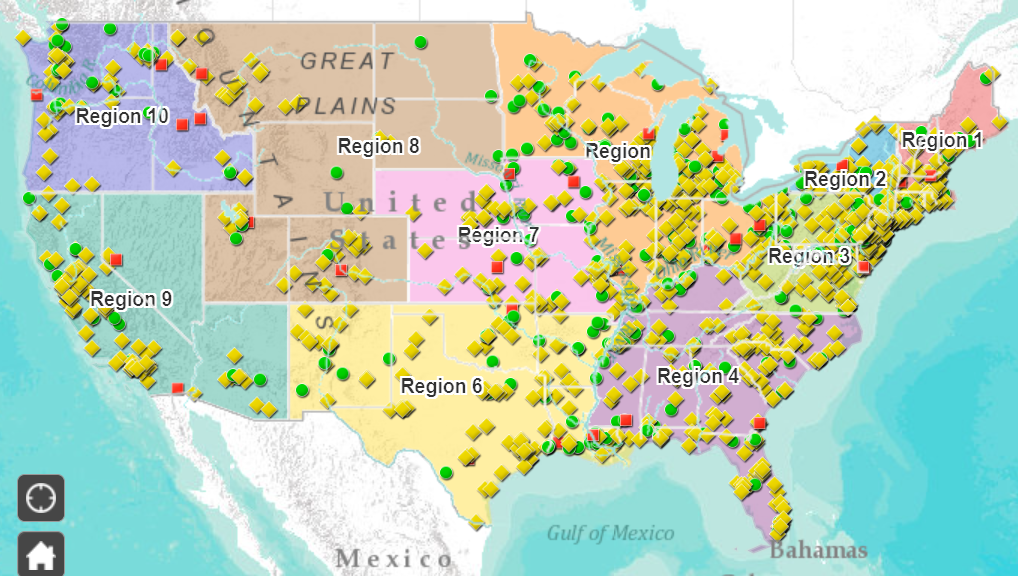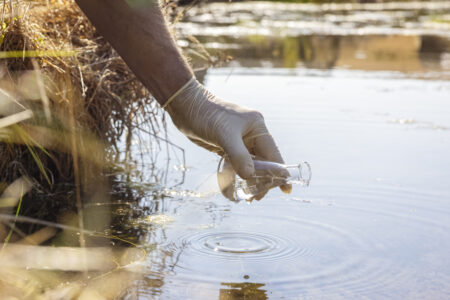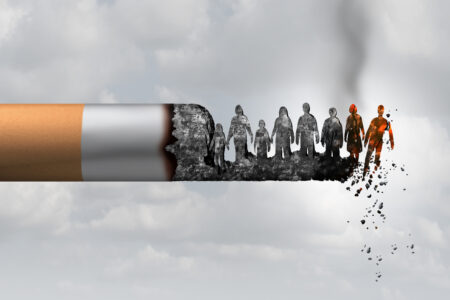
Share On Social!
Research suggests that Latinos are more likely to live near Superfund sites with contaminated drinking water, increasing risks for adverse health effects.
This health inequity contributes to a larger issue of Latinos generally having less access to clean, safe drinking water in the US.
Join us as Salud America! explores this health disparity through a three-part series on Latino drinking water contamination.
Part 1 focused on nitrates in drinking water, how prevalent nitrate-contaminated drinking water is in Latino communities, and how the nation is promoting safer water for Latinos and all people.
Today, in Part 2, we will address contaminated drinking water at Superfund sites, its impact on Latinos, and current efforts to promote safer drinking water in these areas.
Part 3 will focus on water insecurity in colonias and the US/Mexico border, and how we can address this health inequity.
What Are Superfund Sites? 
A Superfund site is an area the Environmental Protection Agency (EPA) has deemed the most contaminated or polluted land in the country.
According to the EPA, thousands of Superfund sites exist in the US due to hazardous waste being dumped, left out in the open, or improperly managed by entities, such as manufacturing facilities, processing plants, landfills, and mining sites.
The EPA created the Superfund program to mitigate toxic materials at these sites by holding parties accountable for pollution and funding cleanup efforts. However, it can take years to decades to reverse damage to the surrounding environment, including groundwater resources used for drinking water.
According to the EPA, groundwater contamination is common at Superfund sites. Over 80% of these sites have polluted nearby groundwater with toxic materials that pose risks to human health.
Research suggests that of the 30 hazardous substances found most often at Superfund sites, more than half are known or suspected human carcinogens, and nearly all are associated with negative health effects, including liver, kidney, or reproductive system issues.
How Do Superfund Sites Affect Latinos?
Approximately 29% of Latinos live within three miles of a Superfund site in the US.
Although the Superfund program is working to clean up these polluted areas, cleanup efforts often experience delays or stoppages due to lack of funding and technology, other polluted areas taking priority, and recent events, such as the COVID-19 pandemic.
As a result, Latino communities near Superfund sites continue to suffer the consequences of living in a highly polluted environment, including exposure to contaminated drinking water.
For example, residents in a predominantly Latino community near a Superfund site in Grand Prairie, Texas (48.7% Latino), rely on bottled water for cooking and cleaning — an additional financial, mental, and environmental burden. Residents feel that bottled water is safer than using the groundwater, which is contaminated with trichloroethylene (TCE), a highly toxic chemical used to clean machinery.
One Grand Prairie resident explained that he does not use his well water due to a warning from the city.
“I’ve been here 20 years and I’ve never been able to use it,” he told KERA News.
Contamination issues with Superfund sites continue across the nation, from low-income colonias in Texas to highly developed areas, such as Silicon Valley in California’s Santa Clara County, which has 23 Superfund sites (more than any other county in the US) and where 25% of people are Latino.
“No community deserves to have contamination near where they live, work, pray, and go to school,” commented Jennah Durant, EPA spokesperson, in a KERA News article about the conditions in Grand Prairie.
Why Are Latinos More Likely to Live Near Superfund Sites?
Studies suggest that individuals might not be aware of the existence of Superfund sites when they choose a place to live.
This lack of awareness is especially likely prior to the establishment of the Superfund program in 1980.
Even if individuals know about a nearby Superfund site, it is likely that they are not aware of the full extent of the dangers posed by living near it.
Additionally, distance from toxic waste sites to homes affect home prices, and because Latinos are disproportionately affected by housing inequities, cheaper housing options can be appealing.
“Sadly, US Latino communities face unaffordable housing, unreliable public transportation, and a lack of green space and parks,” said Dr. Amelie Ramirez, director of Salud America! at UT Health San Antonio, in a recent research review. “This limits Latinos’ access to health-promoting assets ─ medical care, good schools, healthy food, and physical activity.”
How Can We Fight for Clean Drinking Water Near Superfund Sites?
Lack of access to clean, safe drinking water in communities near Superfund sites is an environmental injustice. Latinos are disproportionally likely to experience this injustice because of housing inequities.
Together, we can tackle this issue through increased awareness of our surrounding environment and the inequities Latinos face.
Explore Superfund locations in the US here and clean-up sites here.
For community leaders who want to get involved in cleanup efforts, the EPA offers technical assistance and community involvement tools and resources.
You can also play a role in advocating for local, systemic change.
Select your county and get a Health Equity Report Card by Salud America! at UT Health San Antonio. In your report card, you will see maps, data, and gauges to compare health equity issues, including environmental concerns, to the rest of your state and nation.
You can email your Health Equity Report Card to local leaders to stimulate community change. Use the data in your materials or share on social media to raise awareness.
By The Numbers
1
Quick Survey
Can help you find out how chemically sensitive you are



